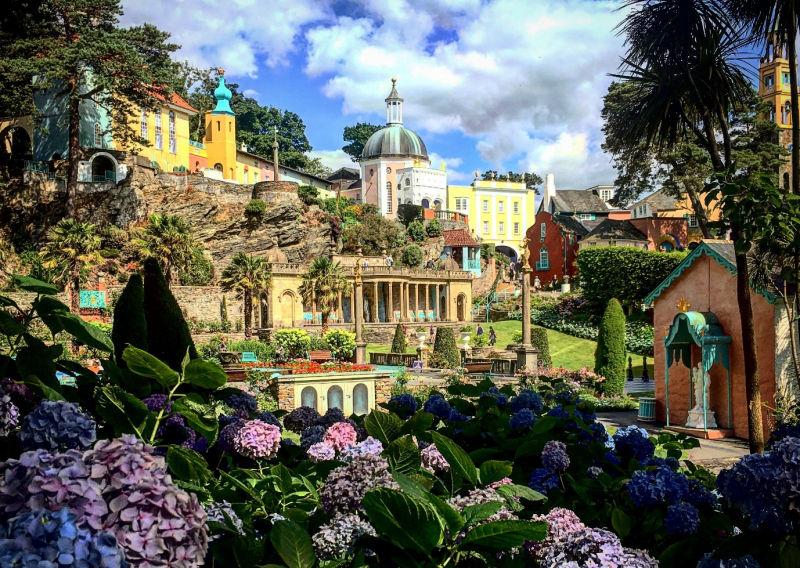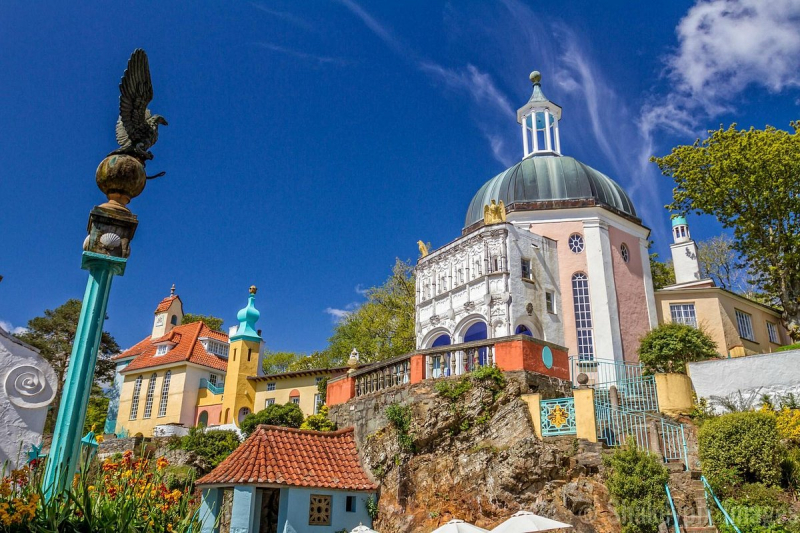Portmeirion
Portmeirion is a tourist village in North Wales' Gwynedd. Sir Clough Williams-Ellis conceived and erected it in the manner of an Italian village between 1925 and 1975, and it is now owned by a charitable trust. The village lies in the Penrhyndeudraeth community, on the estuary of the River Dwyryd, 2 miles (3.2 km) southeast of Porthmadog, and 1 mile (1.6 km) from Minffordd railway station. Portmeirion has appeared in various films and television shows, most notably "The Village" in the 1960s television series The Prisoner.
Between 1925 and 1975, Williams-Ellis developed and built the village. He used remnants of demolished structures, as well as works by a number of other architects. Portmeirion's architectural bricolage and purposefully fantastical nostalgia have been cited as influences on the late-twentieth-century development of postmodernism in architecture.
Writers and television producers have drawn inspiration from Portmeirion. While vacationing in the Fountain 2 suite at Portmeirion, Noel Coward composed Blithe Spirit. Early guests included George Bernard Shaw and H. G. Wells. In 1956, the architect Frank Lloyd Wright visited, as did Gregory Peck and Ingrid Bergman. Stanley Long, a former RAF photographer, came to establish a valuable stereoview series through VistaScreen in the late 1950s. The village also has several ties to the Beatles.
Portmeirion is presently held by a charitable trust and has always operated as a hotel, with the majority of the buildings serving as hotel rooms or self-catering cottages, as well as shops, a cafe, a tea room, and a restaurant. Portmeirion is now a prominent tourist attraction in North Wale, and day trips are available for a fee.
Location: Gwynedd, North Wales
















